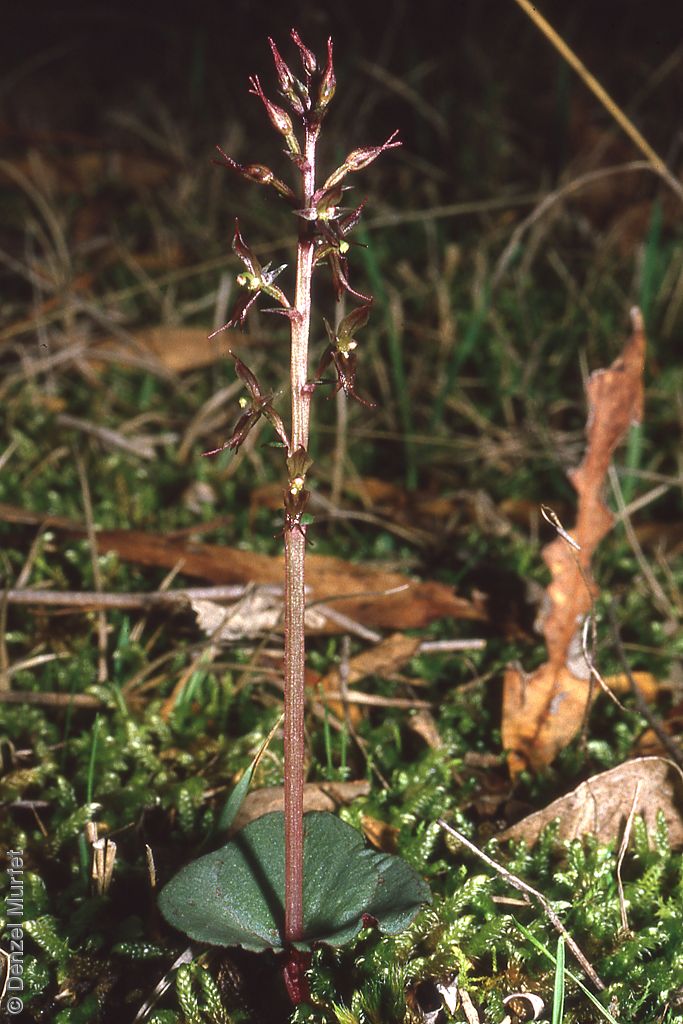

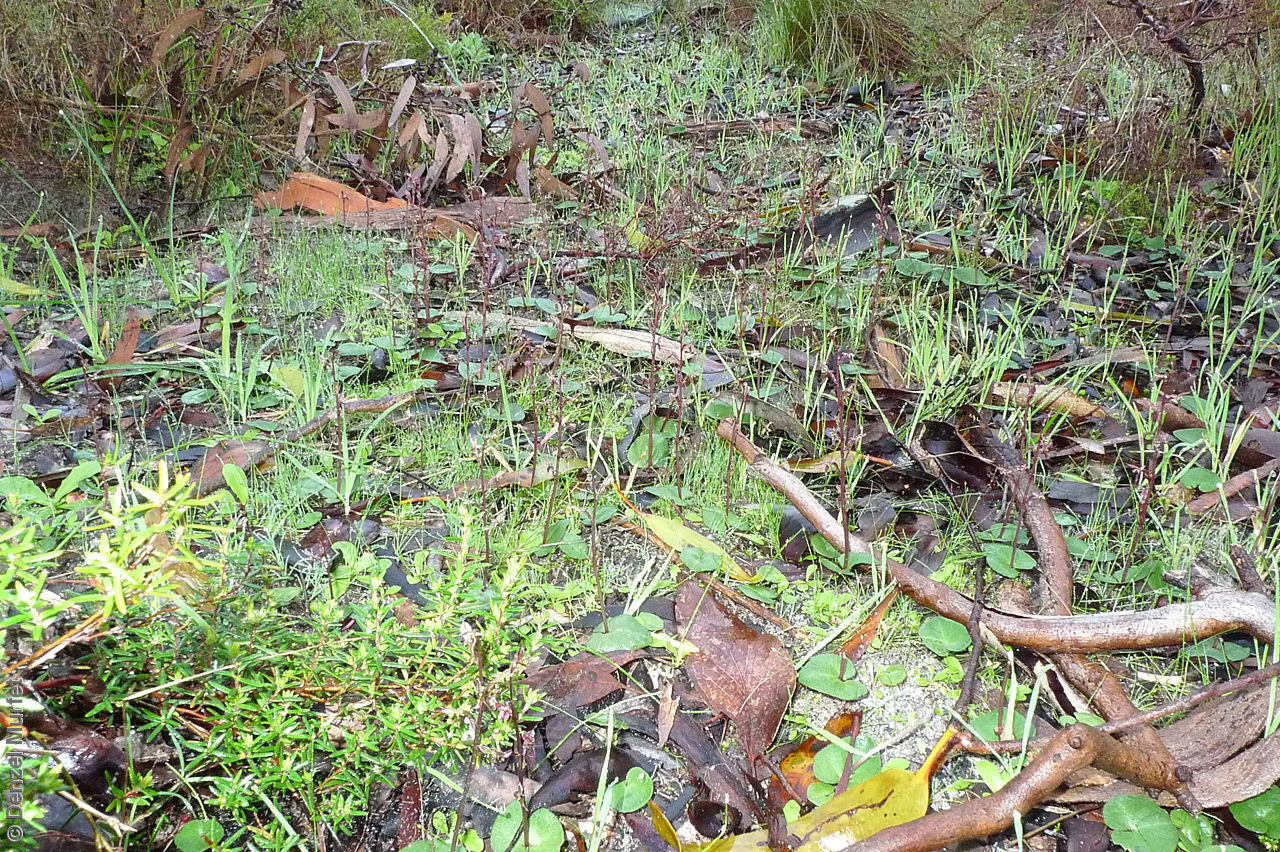
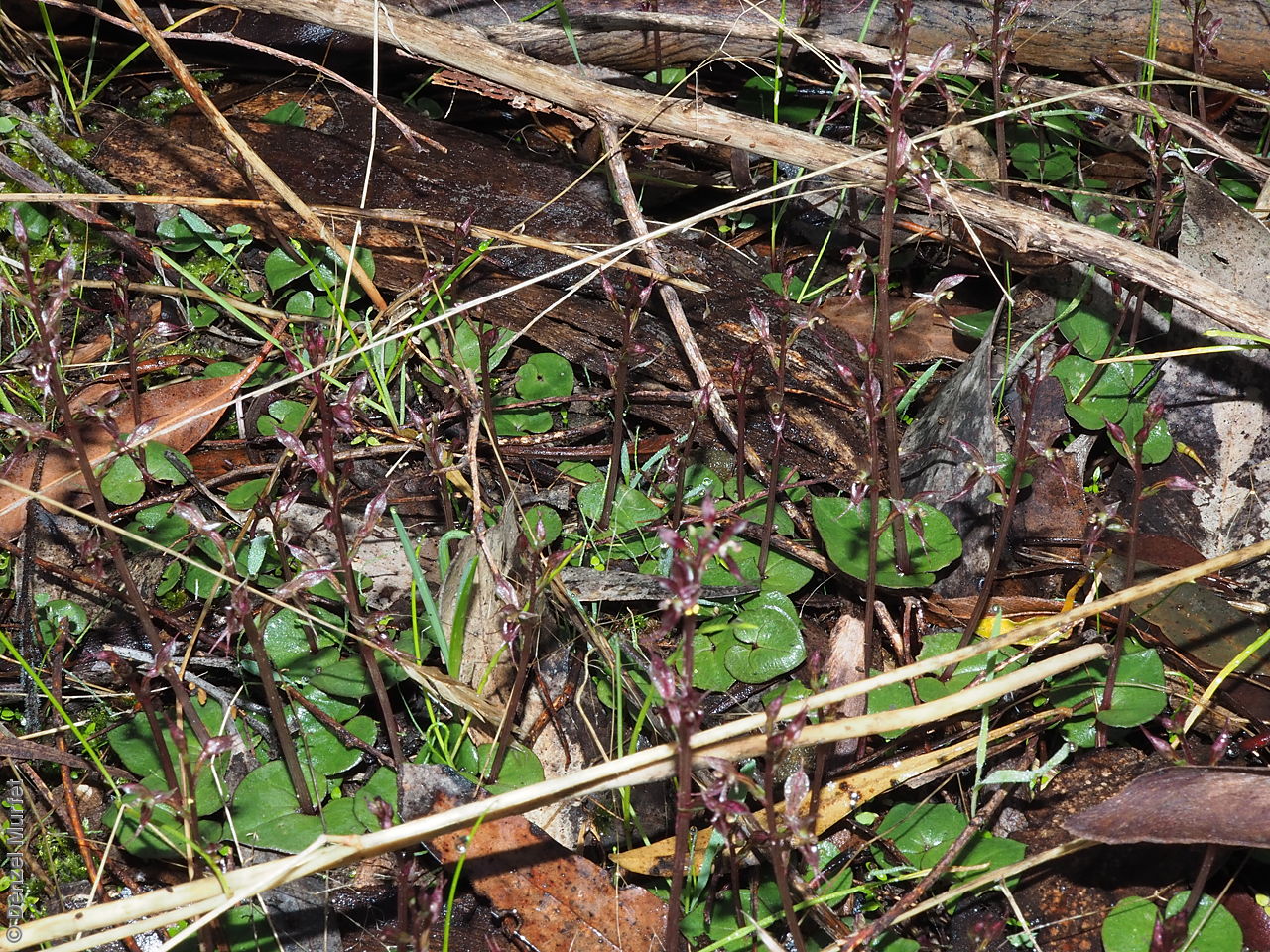
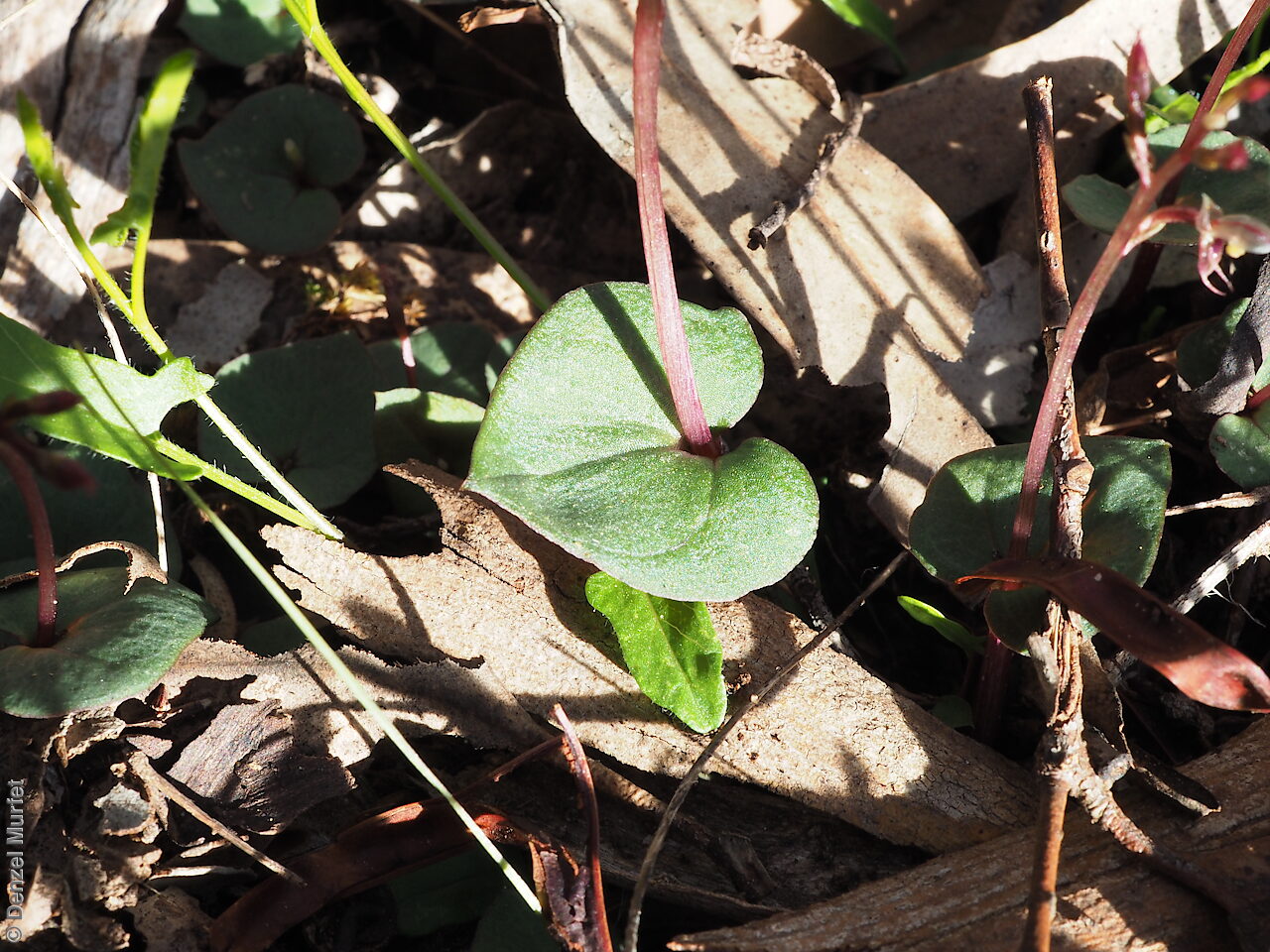
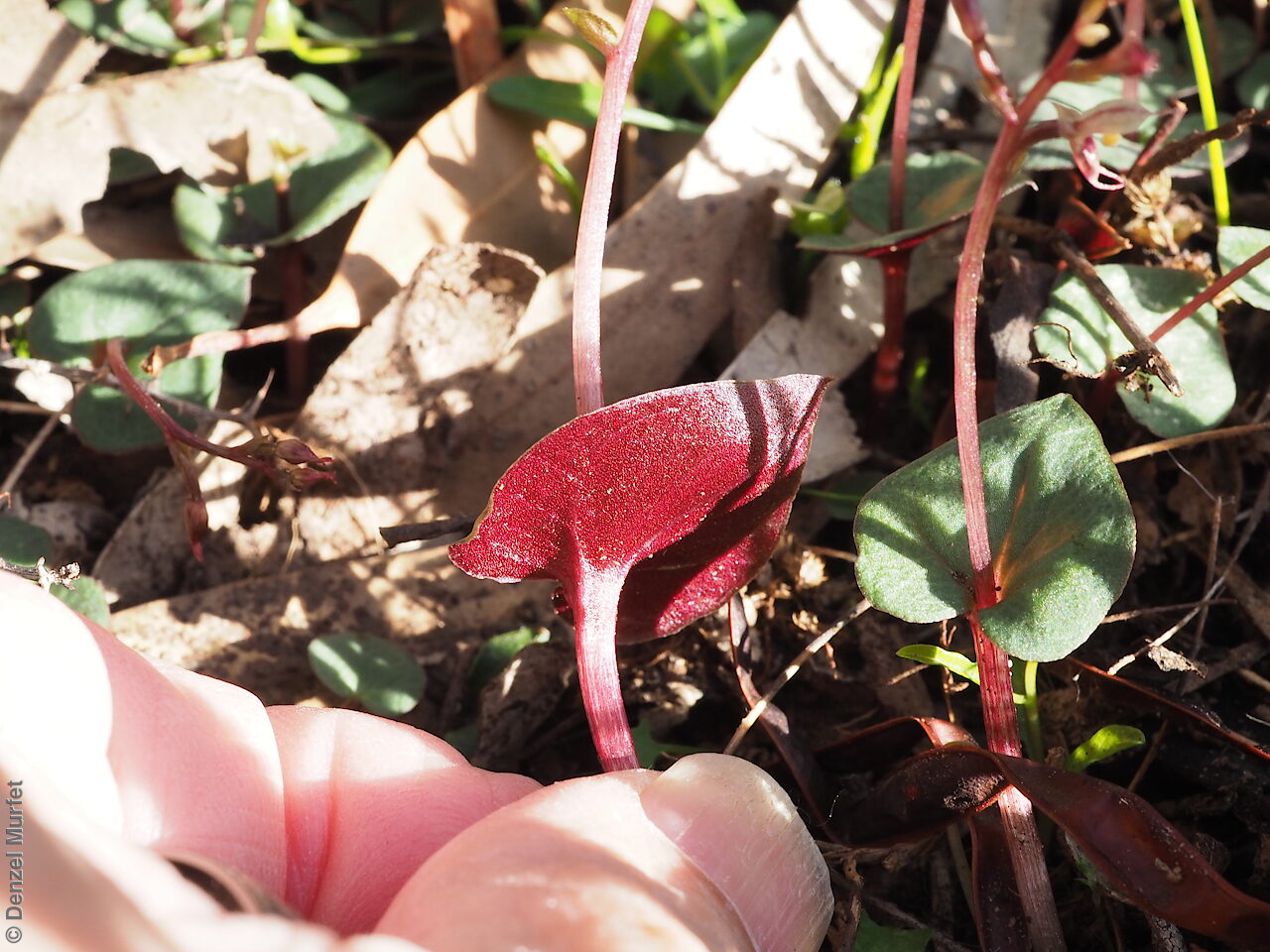

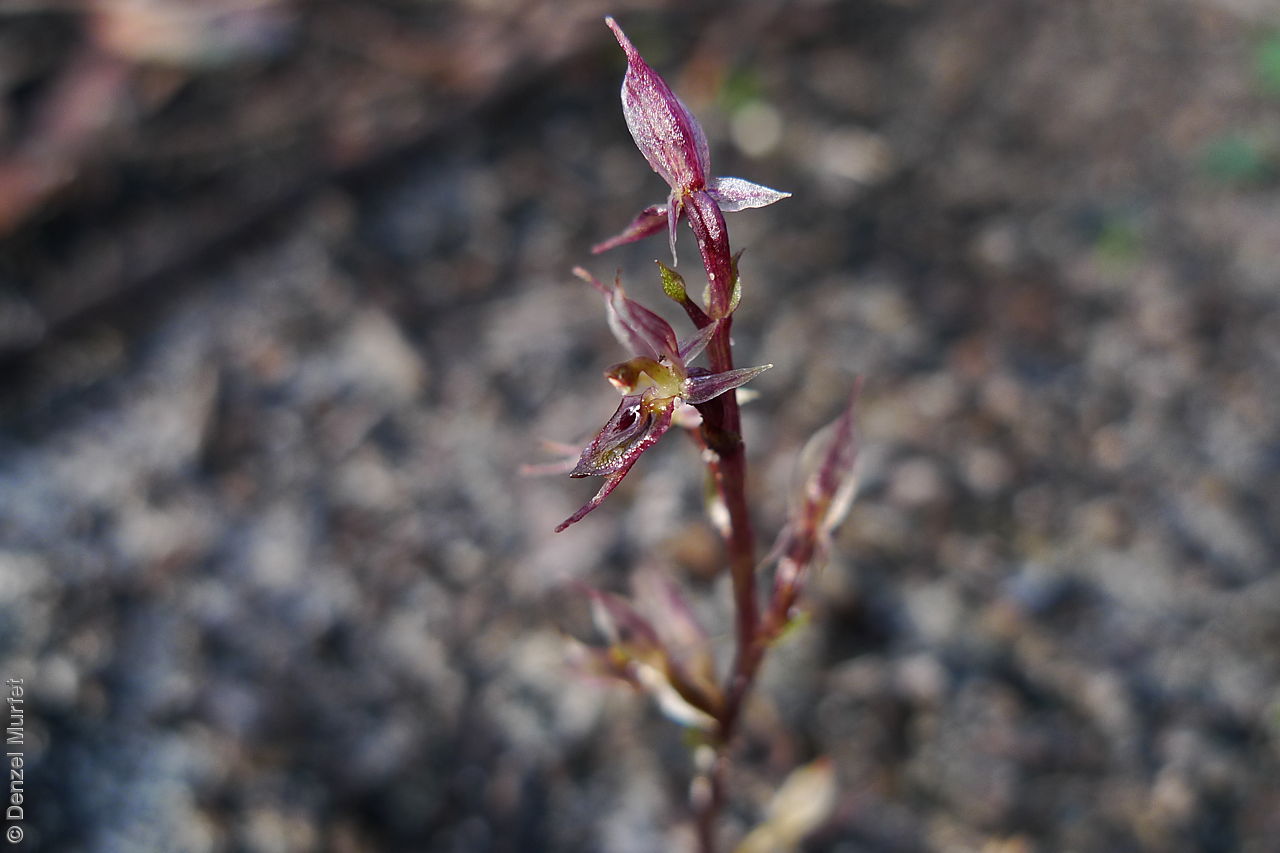
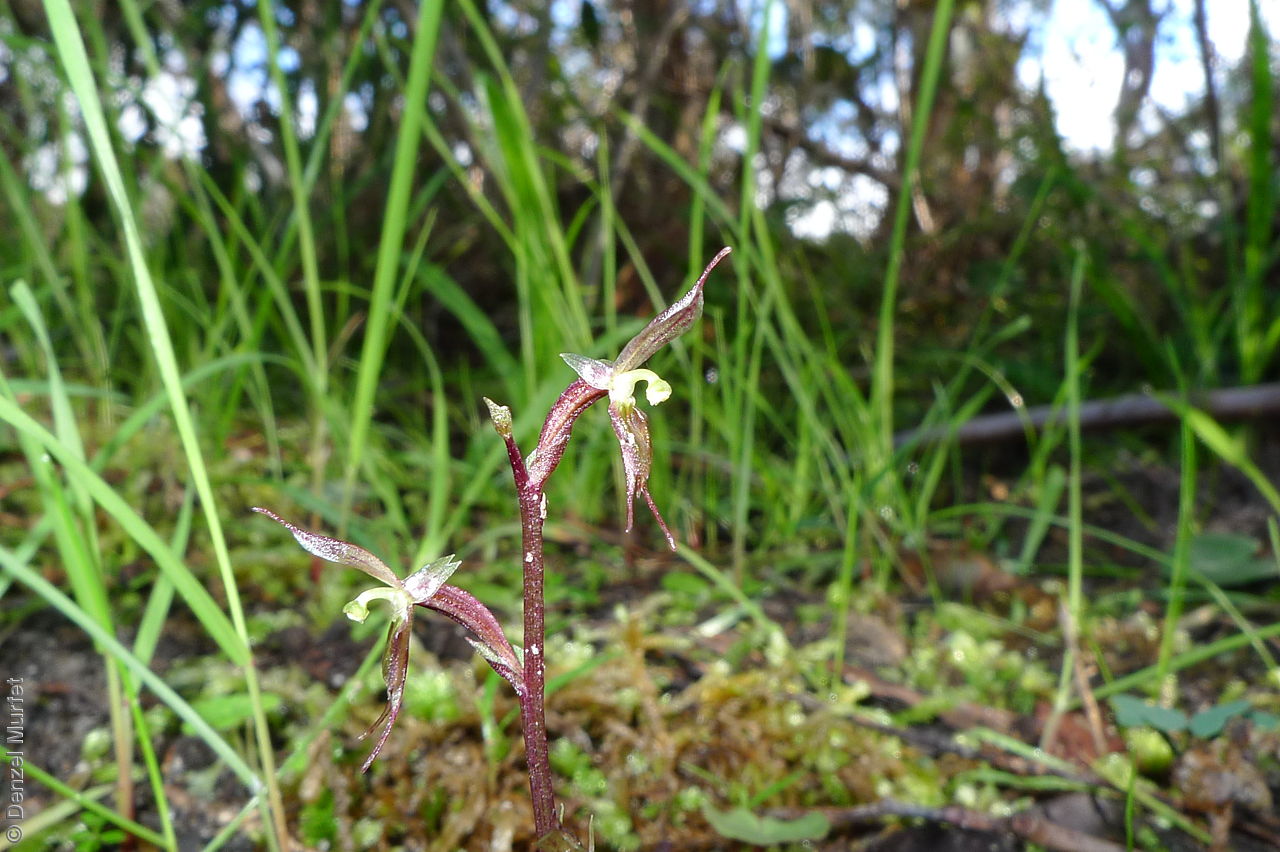

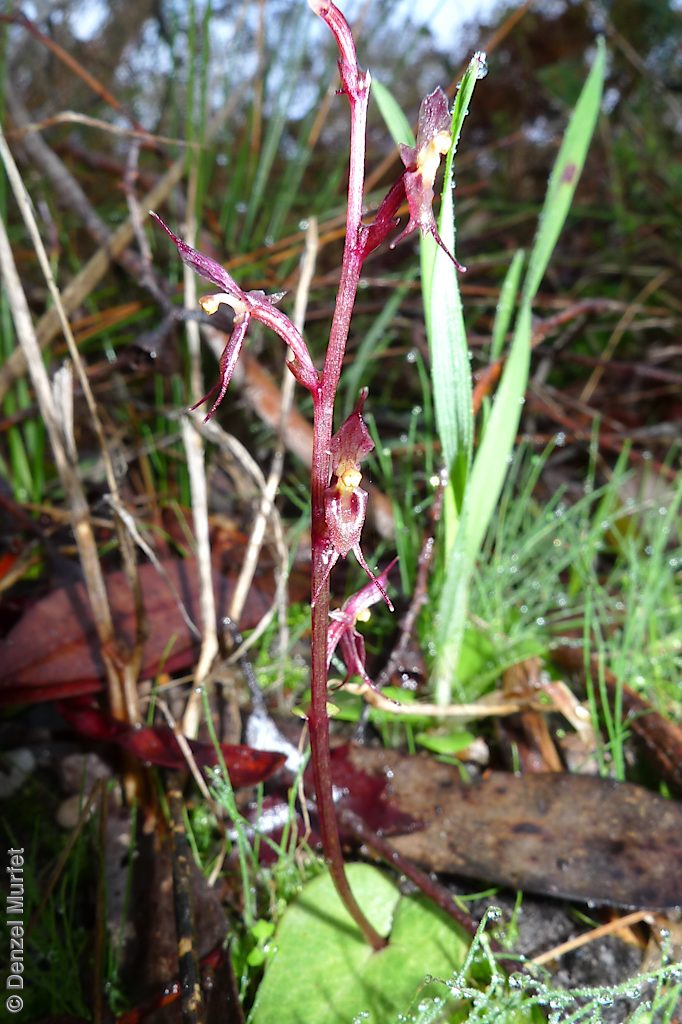


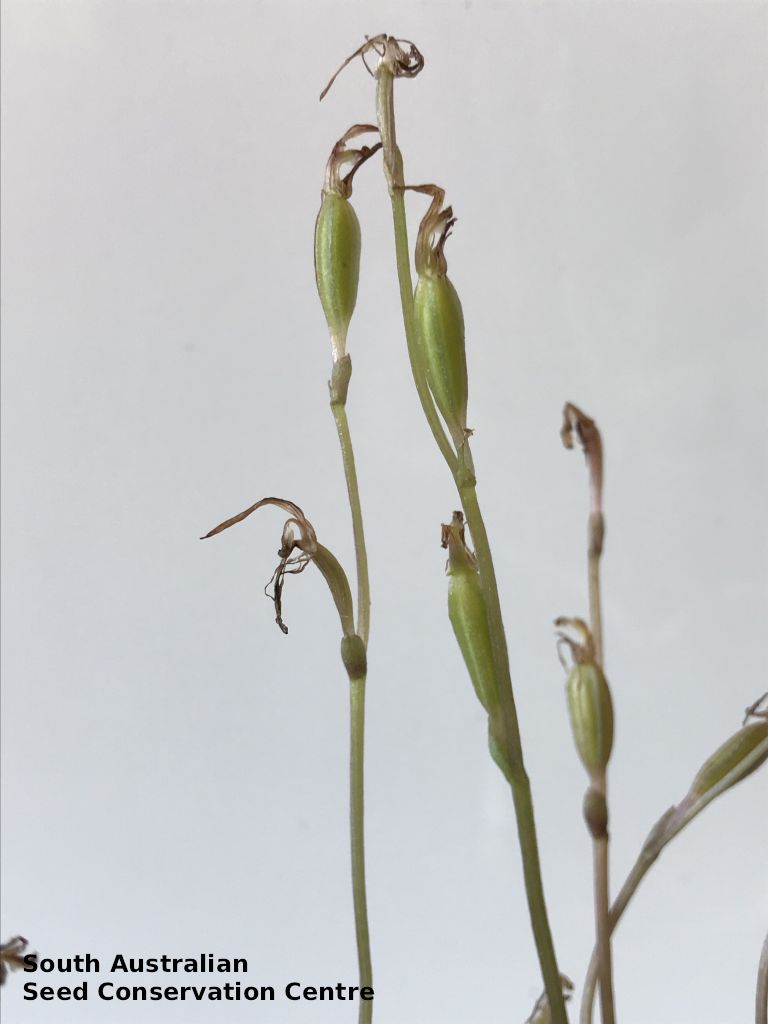
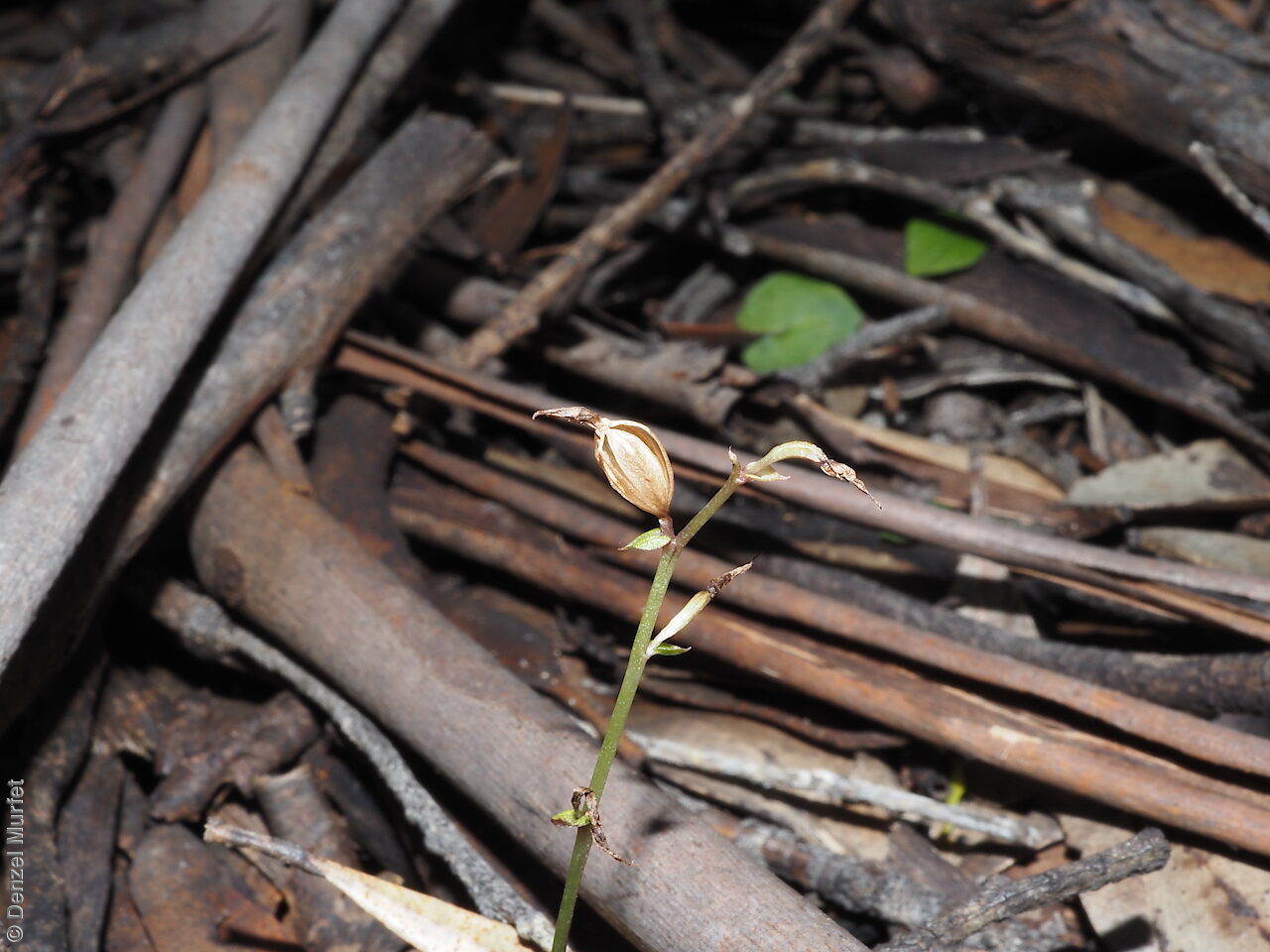


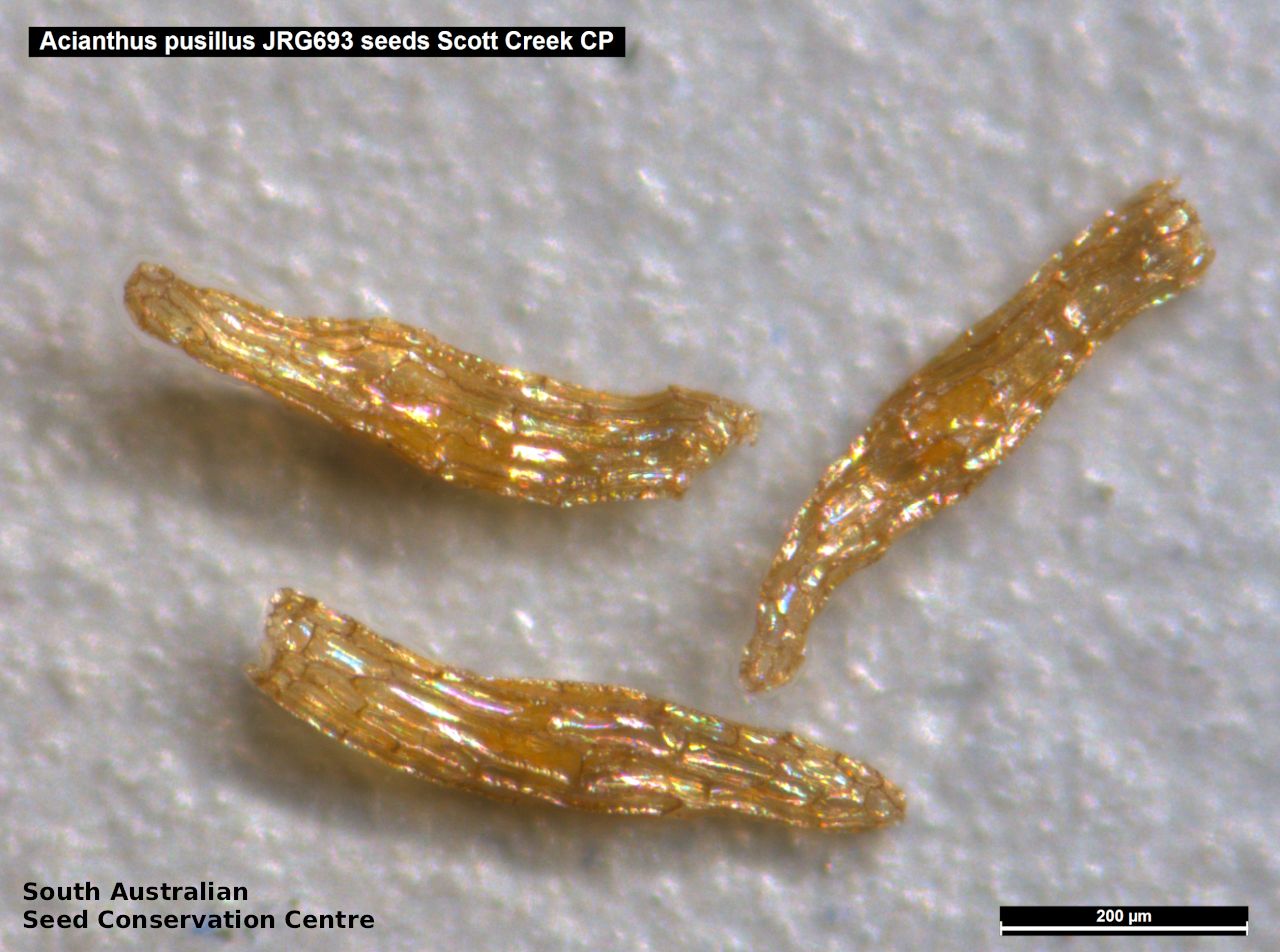



Botanical art
Prior names
Acianthus exsertus
Common names
Small Mosquito Orchid
Mosquito Orchid
Gnat Orchid
Etymology
Acianthus from the Greek 'akis' meaning a point or needle and 'anthos' meaning flower, referring to the pointed sepals. Pusillus from Latin meaning very small, may refer to the small size of the flowers.
Distribution and status
Found in the southern part of South Australia, growing in damp, shady places in a variety of soils and habitats. Also found in Queensland, New South Wales, Victoria and Tasmania. Native. Common in South Australia. Uncommon in Queensland. Common in the other States.
Herbarium regions: Flinders Ranges, Eyre Peninsula, Northern Lofty, Murray, Yorke Peninsula, Southern Lofty, Kangaroo Island, South Eastern, Green Adelaide
NRM regions: Adelaide and Mount Lofty Ranges, Eyre Peninsula, Kangaroo Island, Northern and Yorke, South Australian Arid Lands, South Australian Murray-Darling Basin, South East
AVH map: SA distribution map (external link)
Plant description
Small annual orchid to 12 cm high. Leaf heart-shaped to 30 mm long and 25 mm wide, green above, reddish-purple (rarely greenish) beneath. Leaf margins entire or sometimes shallowly lobed. Flowers from 1-18, translucent green, or pinkish with reddish veins and spots, labellum green to reddish-purple. Dorsal sepal ends in a prominent slender point; lateral sepals are narrow, acuminate and sometimes crossed and gland tipped. The labellum, ovate-lanceolate, to 5mm long, has two basal glands and a short pointed apex. The column is curved forward, with a small concave end. Flowering between May and August. Fruits are brown papery ellipsoid capsule, reddish when immature. Seeds are very small, golden-brown, ellipsoid with a long cylindrical translucent brown mesh-like covering.
Seed collection and propagation
Collect seeds between August and October. Collect fat capsules as they start to dry and turn brown. Pods will split and release the seeds quickly and will require monitoring. To increase the chances of collecting mature pods, it is recommended that a small breathable bag (ie. Organza bags) be used to enclose the developing capsules. Place the capsules in a container that will hold fine seeds and leave to dry for a few weeks or until the capsule split. Then carefully hold the capsule and tap it gently to release the seeds. Store the seeds with a desiccant such as dried silica beads or dry rice, in an air tight container in a cool and dry place or in liquid nitrogen.